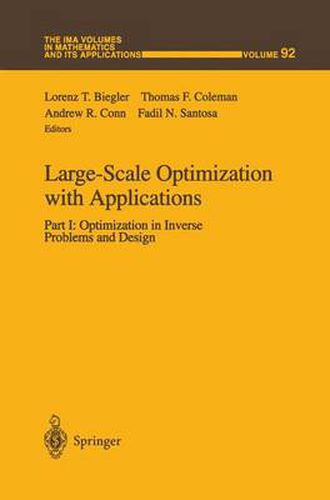Readings Newsletter
Become a Readings Member to make your shopping experience even easier.
Sign in or sign up for free!
You’re not far away from qualifying for FREE standard shipping within Australia
You’ve qualified for FREE standard shipping within Australia
The cart is loading…






This title is printed to order. This book may have been self-published. If so, we cannot guarantee the quality of the content. In the main most books will have gone through the editing process however some may not. We therefore suggest that you be aware of this before ordering this book. If in doubt check either the author or publisher’s details as we are unable to accept any returns unless they are faulty. Please contact us if you have any questions.
Inverse problems and optimal design have come of age as a consequence of the availability of better, more accurate, and more efficient simulation packages. Many of these simulators, which can run on small workstations, can capture the complicated behavior of the physical systems they are modeling, and have become commonplace tools in engineering and science. There is a great desire to use them as part of a process by which measured field data are analyzed or by which design of a product is automated. A major obstacle in doing precisely this is that one is ultimately confronted with a large-scale optimization problem. This volume contains expository articles on both inverse problems and design problems formulated as optimization. Each paper describes the physical problem in some detail and is meant to be accessible to researchers in optimization as well as those who work in applied areas where optimization is a key tool. What emerges in the presentations is that there are features about the problem that must be taken into account in posing the objective function, and in choosing an optimization strategy. In particular there are certain structures peculiar to the problems that deserve special treatment, and there is ample opportunity for parallel computation. THIS IS BACK COVER TEXT!!! Inverse problems and optimal design have come of age as a consequence of the availability of better, more accurate, and more efficient, simulation packages. The problem of determining the parameters of a physical system from
$9.00 standard shipping within Australia
FREE standard shipping within Australia for orders over $100.00
Express & International shipping calculated at checkout
This title is printed to order. This book may have been self-published. If so, we cannot guarantee the quality of the content. In the main most books will have gone through the editing process however some may not. We therefore suggest that you be aware of this before ordering this book. If in doubt check either the author or publisher’s details as we are unable to accept any returns unless they are faulty. Please contact us if you have any questions.
Inverse problems and optimal design have come of age as a consequence of the availability of better, more accurate, and more efficient simulation packages. Many of these simulators, which can run on small workstations, can capture the complicated behavior of the physical systems they are modeling, and have become commonplace tools in engineering and science. There is a great desire to use them as part of a process by which measured field data are analyzed or by which design of a product is automated. A major obstacle in doing precisely this is that one is ultimately confronted with a large-scale optimization problem. This volume contains expository articles on both inverse problems and design problems formulated as optimization. Each paper describes the physical problem in some detail and is meant to be accessible to researchers in optimization as well as those who work in applied areas where optimization is a key tool. What emerges in the presentations is that there are features about the problem that must be taken into account in posing the objective function, and in choosing an optimization strategy. In particular there are certain structures peculiar to the problems that deserve special treatment, and there is ample opportunity for parallel computation. THIS IS BACK COVER TEXT!!! Inverse problems and optimal design have come of age as a consequence of the availability of better, more accurate, and more efficient, simulation packages. The problem of determining the parameters of a physical system from